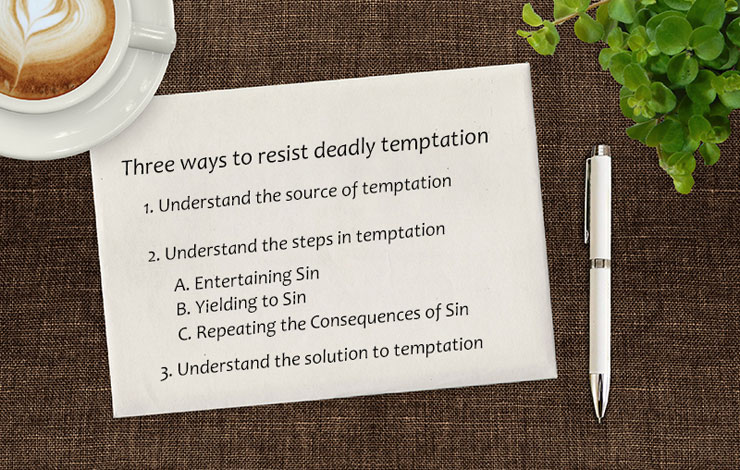How To Write A Sermon Step by Step: I have been writing weekly sermons for nearly three decades now and I have never found sermon writing easy. However, I have developed a weekly routine that has made sermon writing easier and enjoyable.
I teach homiletics to students and they often ask me about the steps that I take to write weekly sermons for my congregation. I have penned those thoughts below and I regularly share them with potential preachers. The key to any good sermon is preparation and these seven steps help me to prepare well on a weekly basis.

How To Write A Sermon Step by Step
I like to be organized and therefore I tend to follow a weekly routine when it comes to sermon writing. The following seven steps help me write weekly sermons on time. I very rarely spent time on sermons on Saturday night. I like to have all the weekly sermons completed by Friday.
1. I start with prayer
Prayer prepares my heart to study God’s word. “Therefore, laying aside all malice, all guile, hypocrisy, envy, and all evil speaking, as new born babes, desire the pure milk of the word, that you may grow thereby” (1 Peter 2:1-2).
Prayer also prepares my mind for understanding and wisdom. “Open my eyes, that I may see wondrous things from your law” (Psalm 119:18). “We … do not cease to pray for you, and to ask that you may be filled with knowledge of his will in all wisdom and spiritual understanding” (Colossians 1:9-10).
2. I analyze the Scriptures
I preach through the books of the Bible verse by verse and passage by passage. The next sermon is always the next passage in book of the Bible that I am preaching.
I read that passage several times. I always sketch a mechanical layout of the passage. This helps me put the writer’s thought patterns together with the logical structure of the passage.
For example, as I was working my way through Genesis, I came to the story of Noah in Genesis 8 and 9. The mechanical layout looked like this: God remembered Noah (8:1), God spoke to Noah (8:15), God made a promise to Noah (8:21) and God blessed Noah (9:1). Then I pencil all other thoughts under those headings.
For example, as I was working my way through the Psalms, I came to Psalm 121. The mechanical layout looked like this: God is our helper (121:1-2), God is our keeper (121:3-4), God is our protector (121:5-6) and God is our preserver (121:7-8). Under those headings I then penned the writer’s thoughts.
Analyzing the Scriptures through the mechanical layout will help you organize the thoughts of the biblical writer and prepare you for writing the sermon outline. I have been doing this for many years and this just comes naturally to me now. When I read the Scriptures, I look for the mechanical layout.
3. I put my thoughts on paper
I put the mechanical layout on paper and then I pencil my thoughts on that piece of paper. I always use paper to write the mechanical layout and my thoughts. If I don’t write them in or scribble them down, I can easily forget those God moments and pieces of wisdom.
4. I read commentaries for insight
I like to read commentaries to see what other people are saying about the text, especially the historical and cultural setting of the passage of Scripture. I generally read about ten different commentaries because not all commentaries are the same. Some commentaries are exegetical, others summarize and some provide general information whereas others provide specific information.
5. I create the sermon outline
The mechanical layout of the passage does not necessarily become the sermon outline but it does help form the sermon outline.
I always remind myself that the sermon outline is not the complete sermon. The complete sermon has an introduction, a body (the sermon outline) and a conclusion. So when I sketch the sermon outline, I am simply developing an outline of the material that I studied in the mechanical layout.
The sermon outline consists of the main preaching point, sub-points and incidental points. The main preaching point of this passage is: Resisting Deadly Temptation. The three sub-points are: The Source of Temptation, The Steps in Temptation and The Solution for Temptation. Under sub-point two, I used three incidental points to trace the three steps in temptation: Entertaining Sin, Yielding to Sin and Repeating the Consequences of Sin.

6. I write the sermon
The sermon outline is only one part of the sermon. Therefore, I write content to the sermon outline first with illustrations to make the points clear. Once I put content to the sermon outline, I write the introduction and the conclusion.
Now it is up to the individual how much you write in the sermon. Some people write a complete manuscript, others simply write copious notes. I usually write copious notes because I prefer to preach from an outline rather than a manuscript.
7. I reflect upon the sermon
I always have the sermon completed by Friday. I look over it on Friday morning and early Sunday morning. During this time I can add or change information as the Holy Spirit guides.
How To Write A Sermon Step by Step Resources
Biblical Preaching by Haddon Robinson
Christ-Centered Preaching by Bryan Chapell
How To Preach Without Notes by Charles Koller
How To Prepare Bible Messages by James Braga
The Homiletical Plot by Eugene Lowry
Understanding and Applying the Bible by McQuilkin Robertson